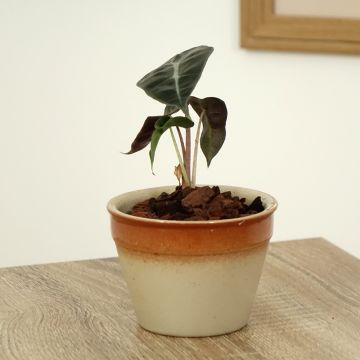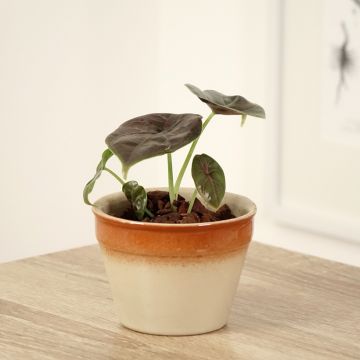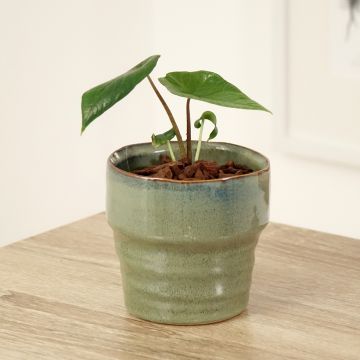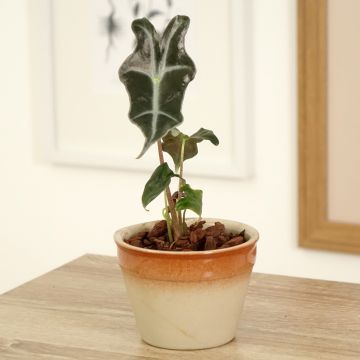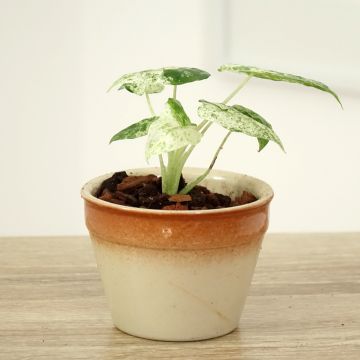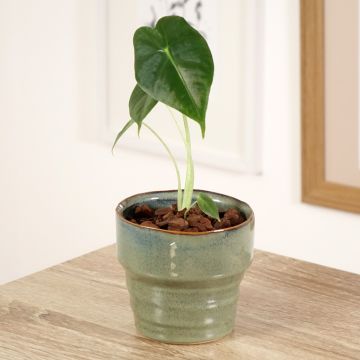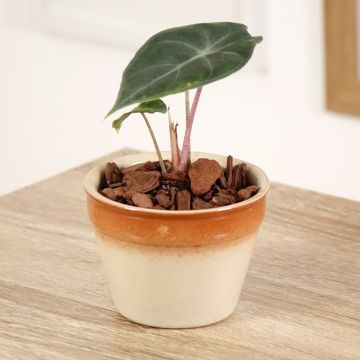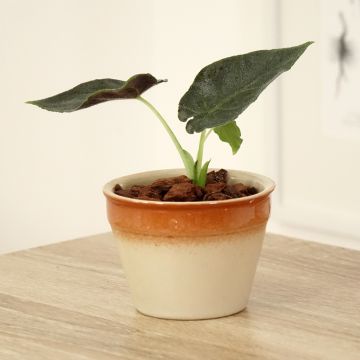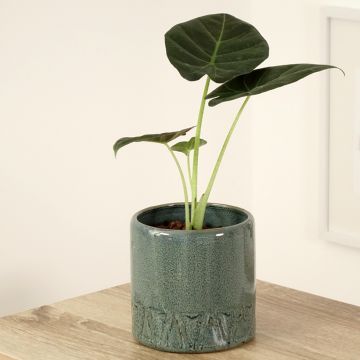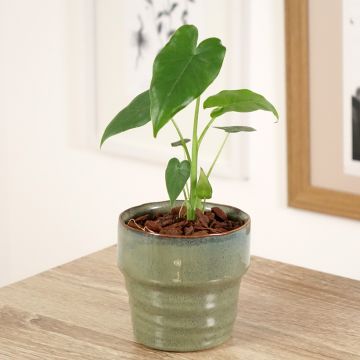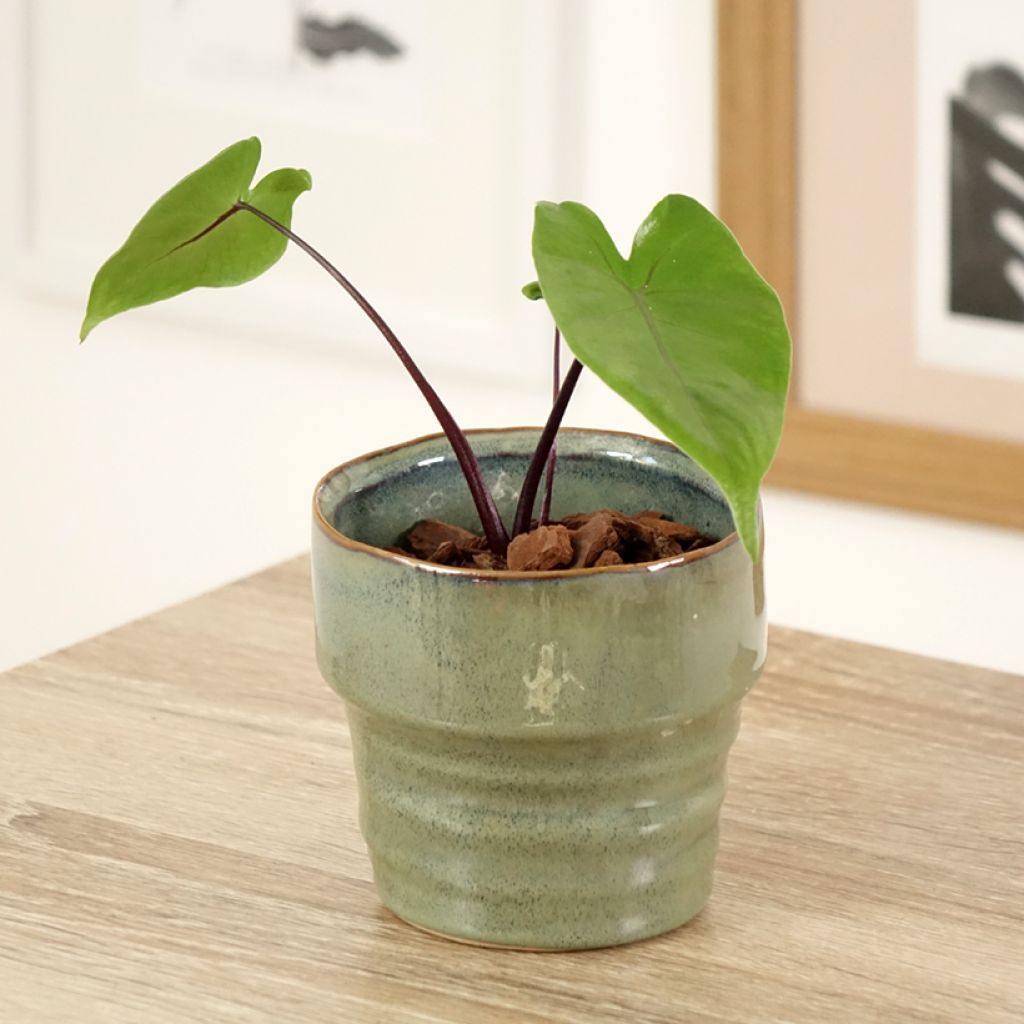

Alocasia macrorrhizos 'Violacea' - Black Stem Elephant ear
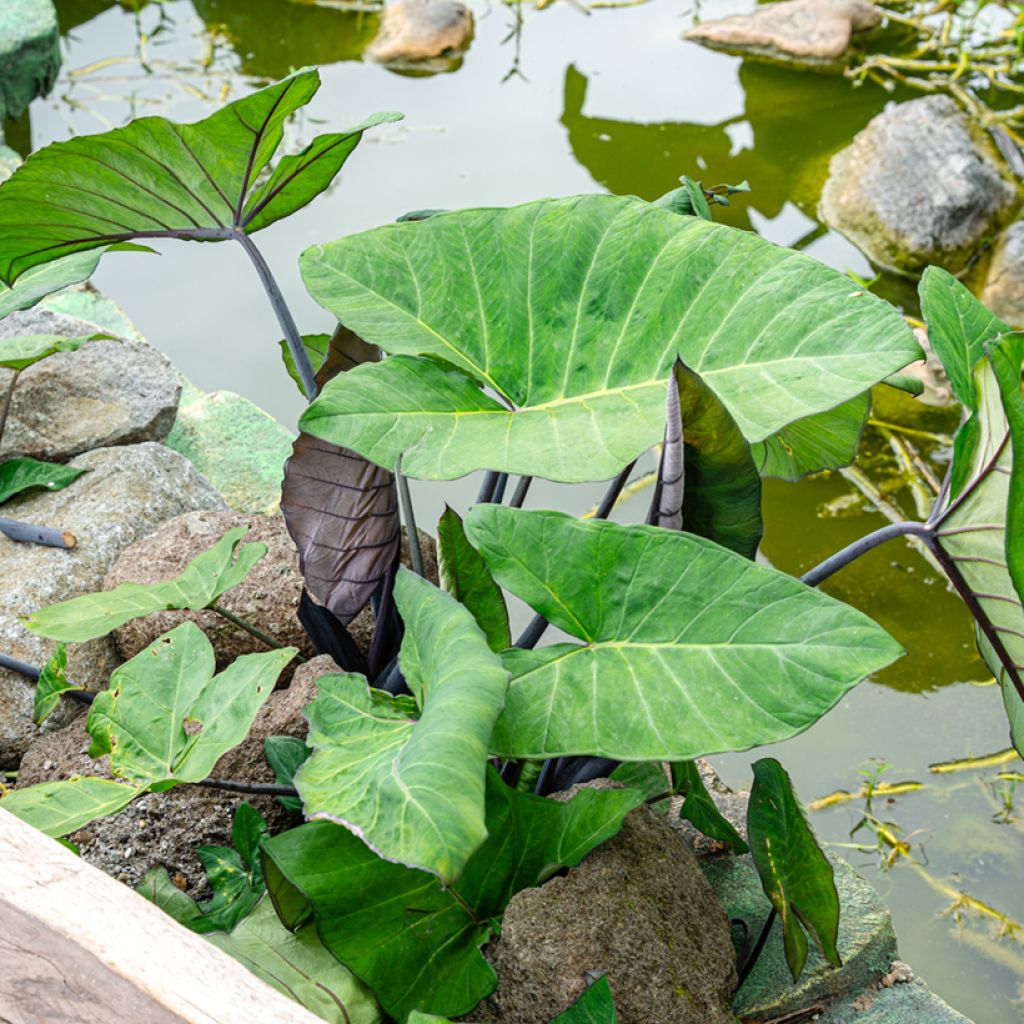

Alocasia macrorrhizos 'Violacea' - Black Stem Elephant ear


Alocasia macrorrhizos 'Violacea' - Black Stem Elephant ear


Alocasia macrorrhizos 'Violacea' - Black Stem Elephant ear


Alocasia macrorrhizos 'Violacea' - Black Stem Elephant ear
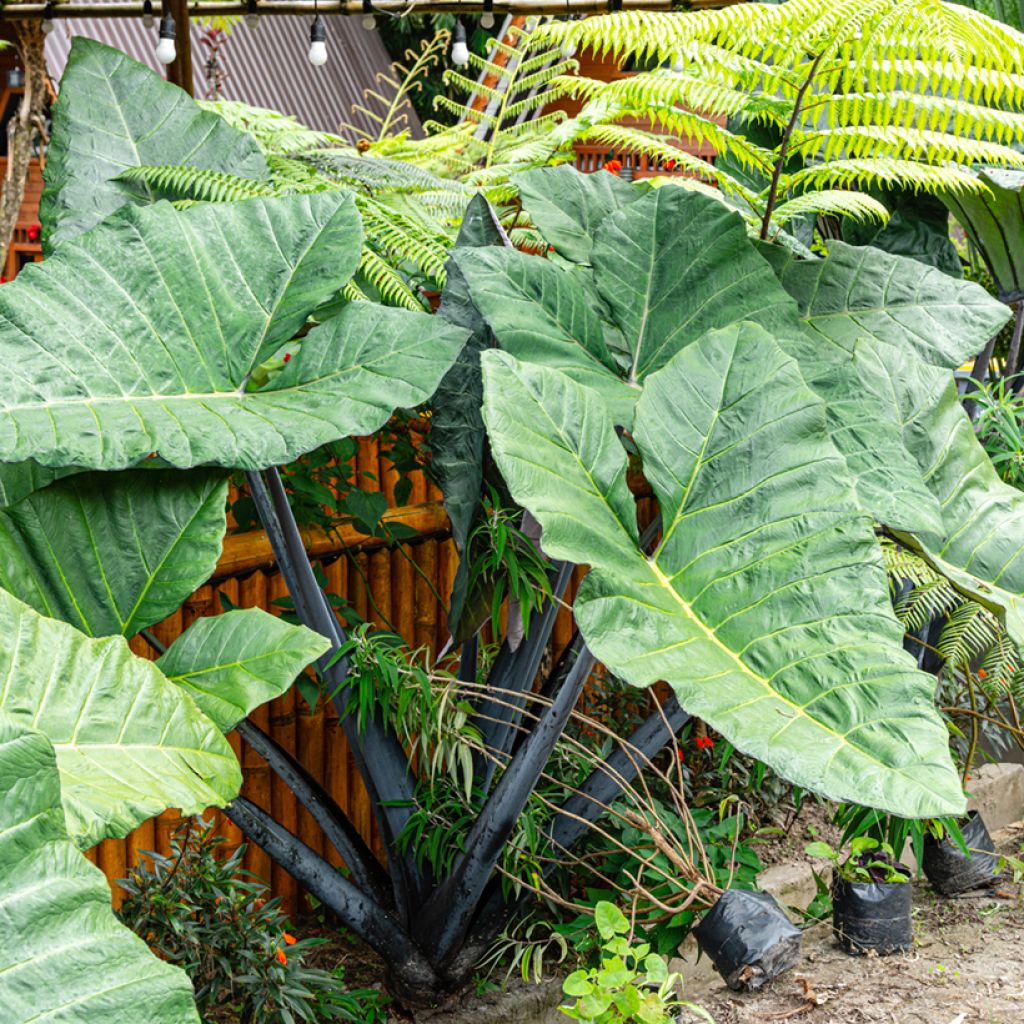

Alocasia macrorrhizos 'Violacea' - Black Stem Elephant ear
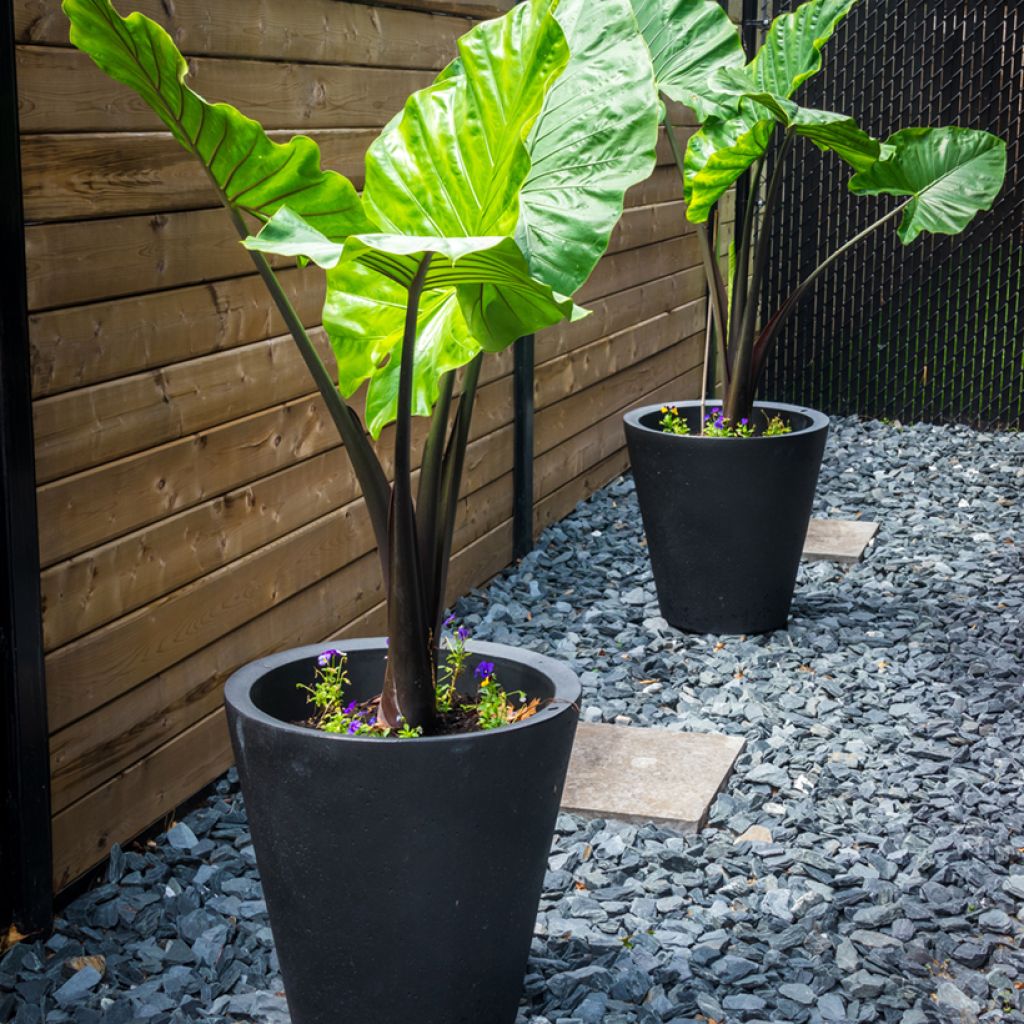

Alocasia macrorrhizos 'Violacea' - Black Stem Elephant ear
Alocasia macrorrhizos Violacea - Oreja de elefante
Alocasia macrorrhizos 'Violacea' Black Stem
Oreja de elefante
This item cannot be shipped to the selected country
Delivery charge from 6,90 €
More information
Shipping country:
-
-
-
-
-
-
-
-
-
-
-
-
-
-
-
-
-
-
-
-
-
-
-
-
-
-
-
-
-
-
-
-
Schedule delivery date,
and select date in basket
This plant carries a 30 days recovery warranty
More information
We guarantee the quality of our plants for a full growing cycle, and will replace at our expense any plant that fails to recover under normal climatic and planting conditions.
From 7,90 € for pickup delivery and 6,90 € for home delivery
Express home delivery from 8,90 €.
Description
Alocasia macrorrhizos Violacea or ‘Black Stem’, also known as Elephant’s Ear, is a must-have houseplant for lovers of exotic botanical decor. With its strikingly elegant black stems and large, glossy, veined leaves, it transforms any room into a miniature urban jungle. Perfect for modern, bohemian, or minimalist interiors, it thrives in bright spaces. Avoid drafts and maintain high humidity to protect its spectacular foliage.
Alocasia ‘Black Stem’ is an upright perennial with rapid growth, reaching 1.50 to 1.80 metres in height with a spread of 90 to 120 cm. These dimensions depend on pot size and growing conditions. It is a rhizomatous plant from the aroid family, related to Arums. This cultivar is prized for its black stems, which contrast beautifully with its deep green, heart- or arrow-shaped leaves, growing up to 60 cm long. The thick, glossy leaves have an almost artificial-looking texture. As it grows, the plant branches from the base, maintaining its elegant form. When an old leaf is removed, two new ones take its place. This Alocasia rarely flowers indoors. Its inflorescences are subtle, spathe-type, and appear as cream-coloured bracts. Note that it is toxic if ingested.
Native to Southeast Asia, Alocasias are tropical plants that thrive in warm, humid climates with partial shade. Though stunning, they can be challenging to accommodate in indoor environments where the air is too dry. Their roots are also sensitive to both overwatering and underwatering. The ideal temperature for cultivation is around 20°C.
Indoors, Alocasia ‘Black Stem’ quickly becomes a focal point due to its imposing presence and sophisticated appearance. Place it in a large white or black ceramic pot to accentuate the contrast of its stems and make it stand out in a minimalist or contemporary setting. It also shines in tropical or bohemian spaces, surrounded by rattan, raw wood, or natural fibre elements. To enhance your decor, pair it with plants like Monstera or Calathea sanguinea, which share its need for indirect light and high humidity. Position it near a sheer-curtained window or in a temperate conservatory to encourage full growth. On light stone flooring or in a high-ceilinged room, it becomes a striking feature, elevating a decor that’s both natural and chic.
Report an error about the product description
Alocasia macrorrhizos Violacea - Oreja de elefante in pictures
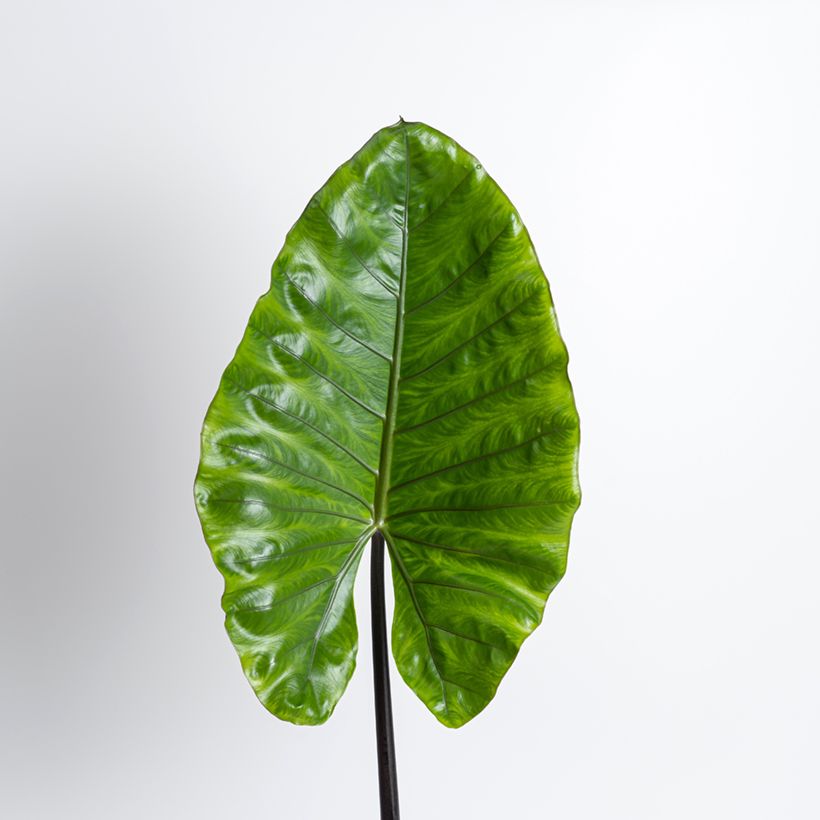



Foliage
Plant habit
Flowering
Botanical data
Alocasia
macrorrhizos
'Violacea' Black Stem
Araceae
Oreja de elefante
Cultivar or hybrid
Safety measures
atteintescutaneomuqueuses
Cette plante peut provoquer l'apparition de réactions cutanées indésirables, une atteinte des yeux, ou des difficultés respiratoires si elle est ingérée.
Ne la plantez pas là où de jeunes enfants peuvent évoluer. Evitez tout contact avec la peau: privilégiez l'emploi de gants pour la manipuler. En cas de contact, lavez-vous soigneusement les mains et rincez abondamment à l'eau la zone concernée. Lavez les vêtements entrés en contact. En cas de réaction cutanée, contactez votre médecin ou le centre antipoison le plus proche de chez vous. En cas d'atteinte étendue ou de difficultés respiratoires, appelez immédiatement le 15 ou le 112.Pensez à conserver l'étiquette de la plante, à la photographier ou à noter son nom, afin de faciliter le travail des professionnels de santé.
Davantage d'informations sur https://plantes-risque.info
Other Alocasia
View all →Location
Location
Maintenance and care
Potting advice, substrates and fertilisers
Houseplant care
Maintenance and care
This item has not been reviewed yet - be the first to leave a review about it.
Haven't found what you were looking for?
Hardiness is the lowest winter temperature a plant can endure without suffering serious damage or even dying. However, hardiness is affected by location (a sheltered area, such as a patio), protection (winter cover) and soil type (hardiness is improved by well-drained soil).

Photo Sharing Terms & Conditions
In order to encourage gardeners to interact and share their experiences, Promesse de fleurs offers various media enabling content to be uploaded onto its Site - in particular via the ‘Photo sharing’ module.
The User agrees to refrain from:
- Posting any content that is illegal, prejudicial, insulting, racist, inciteful to hatred, revisionist, contrary to public decency, that infringes on privacy or on the privacy rights of third parties, in particular the publicity rights of persons and goods, intellectual property rights, or the right to privacy.
- Submitting content on behalf of a third party;
- Impersonate the identity of a third party and/or publish any personal information about a third party;
In general, the User undertakes to refrain from any unethical behaviour.
All Content (in particular text, comments, files, images, photos, videos, creative works, etc.), which may be subject to property or intellectual property rights, image or other private rights, shall remain the property of the User, subject to the limited rights granted by the terms of the licence granted by Promesse de fleurs as stated below. Users are at liberty to publish or not to publish such Content on the Site, notably via the ‘Photo Sharing’ facility, and accept that this Content shall be made public and freely accessible, notably on the Internet.
Users further acknowledge, undertake to have ,and guarantee that they hold all necessary rights and permissions to publish such material on the Site, in particular with regard to the legislation in force pertaining to any privacy, property, intellectual property, image, or contractual rights, or rights of any other nature. By publishing such Content on the Site, Users acknowledge accepting full liability as publishers of the Content within the meaning of the law, and grant Promesse de fleurs, free of charge, an inclusive, worldwide licence for the said Content for the entire duration of its publication, including all reproduction, representation, up/downloading, displaying, performing, transmission, and storage rights.
Users also grant permission for their name to be linked to the Content and accept that this link may not always be made available.
By engaging in posting material, Users consent to their Content becoming automatically accessible on the Internet, in particular on other sites and/or blogs and/or web pages of the Promesse de fleurs site, including in particular social pages and the Promesse de fleurs catalogue.
Users may secure the removal of entrusted content free of charge by issuing a simple request via our contact form.
The flowering period indicated on our website applies to countries and regions located in USDA zone 8 (France, the United Kingdom, Ireland, the Netherlands, etc.)
It will vary according to where you live:
- In zones 9 to 10 (Italy, Spain, Greece, etc.), flowering will occur about 2 to 4 weeks earlier.
- In zones 6 to 7 (Germany, Poland, Slovenia, and lower mountainous regions), flowering will be delayed by 2 to 3 weeks.
- In zone 5 (Central Europe, Scandinavia), blooming will be delayed by 3 to 5 weeks.
In temperate climates, pruning of spring-flowering shrubs (forsythia, spireas, etc.) should be done just after flowering.
Pruning of summer-flowering shrubs (Indian Lilac, Perovskia, etc.) can be done in winter or spring.
In cold regions as well as with frost-sensitive plants, avoid pruning too early when severe frosts may still occur.
The planting period indicated on our website applies to countries and regions located in USDA zone 8 (France, United Kingdom, Ireland, Netherlands).
It will vary according to where you live:
- In Mediterranean zones (Marseille, Madrid, Milan, etc.), autumn and winter are the best planting periods.
- In continental zones (Strasbourg, Munich, Vienna, etc.), delay planting by 2 to 3 weeks in spring and bring it forward by 2 to 4 weeks in autumn.
- In mountainous regions (the Alps, Pyrenees, Carpathians, etc.), it is best to plant in late spring (May-June) or late summer (August-September).
The harvesting period indicated on our website applies to countries and regions in USDA zone 8 (France, England, Ireland, the Netherlands).
In colder areas (Scandinavia, Poland, Austria...) fruit and vegetable harvests are likely to be delayed by 3-4 weeks.
In warmer areas (Italy, Spain, Greece, etc.), harvesting will probably take place earlier, depending on weather conditions.
The sowing periods indicated on our website apply to countries and regions within USDA Zone 8 (France, UK, Ireland, Netherlands).
In colder areas (Scandinavia, Poland, Austria...), delay any outdoor sowing by 3-4 weeks, or sow under glass.
In warmer climes (Italy, Spain, Greece, etc.), bring outdoor sowing forward by a few weeks.

































